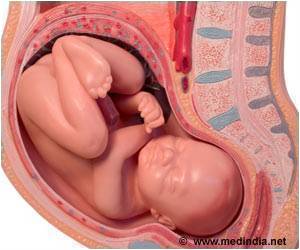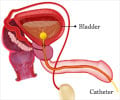
‘Pregnancy after caesarean delivery is associated with an increased risk of miscarriage.’
Tweet it Now
Caesarean delivery rates are rising worldwide, especially for caesareans performed without medical indication. The short-term risks and benefits of caesarean delivery have been well described. In the new study, researchers performed a systemic literature review to identify one randomized controlled trial and 79 cohort studies (29,928,274 participants total) that assessed long-term outcomes following caesarean delivery compared with vaginal delivery. Compared with vaginal deliveries, caesarean deliveries were found to be associated with a decreased risk of urinary incontinence (1,024/7,306 cesarean delivery versus 7,713/51,594 vaginal delivery; OR 0.56 95% CI 0.47 to 0.66) and pelvic prolapse (116/4,898 cesarean delivery versus 2,055/34,310 vaginal delivery; OR 0.29 95% CI 0.17 to 0.51). Children delivered by caesarean sections had an increased risk of asthma for up to 12 years (4,788/124,668 cesarean delivery versus 23,308/763,292 vaginal delivery; OR 1.21 95% CI 1.11 to 1.32) and obesity up to 5 years of age (834/6,645 cesarean delivery versus 5,295/57,468 vaginal delivery; OR 1.59 95% CI 1.33 to 1.90).
Pregnancy after caesarean delivery was associated with an increased risk of miscarriage (2,060/19,106 previous cesarean delivery versus 12,663/132,306 previous vaginal delivery; OR 1.17 95% CI 1.03 to 1.32), stillbirth (496/118,192 previous cesarean delivery versus 1,905/585,370 previous vaginal delivery; OR 1.27 95% CI 1.15 to 1.40), placenta previa (5,039/1,025,692 previous cesarean delivery versus 16,679/6,076,000 previous vaginal delivery; OR 1.74 95% CI 1.62 to 1.87), placenta accreta (44/66,241 previous cesarean delivery versus 188/638,867 previous vaginal delivery), and placental abruption (6,047/858,208 previous cesarean delivery versus 23,855/4,808,952 previous vaginal delivery; OR 1.38 95% CI 1.27 to 1.49).
Given that the findings were predominantly based on observational data, causation cannot be inferred and the findings should be interpreted with caution. Furthermore, the authors were not able to analyze the data by planned (elective) or emergency cesarean.
"This information should help inform discussions about mode of delivery, and may facilitate appropriate personalized delivery planning and shared decision making," the researchers say.
Advertisement















